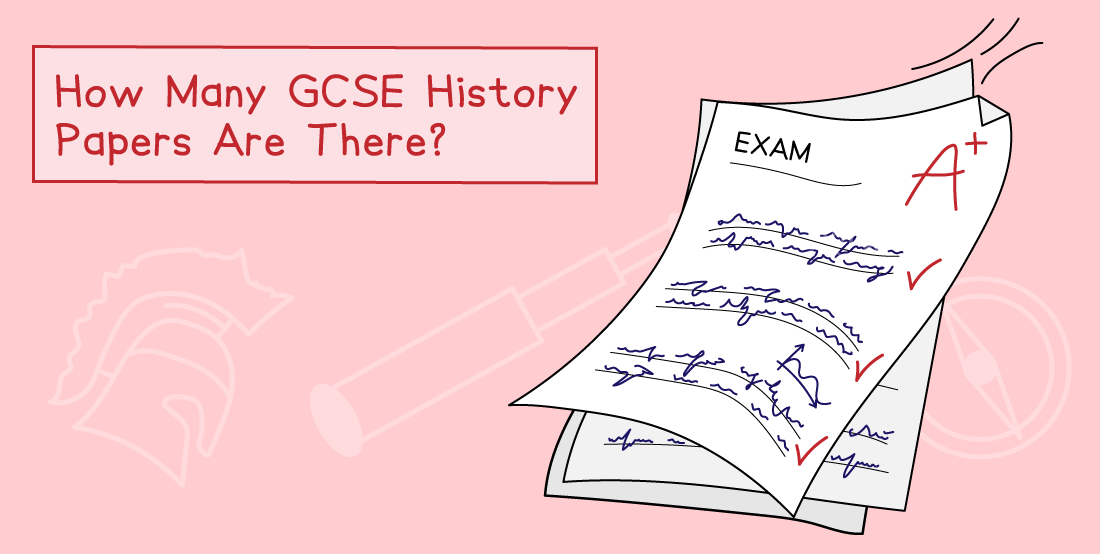How Many GCSE History Papers Are There?
Every exam board assesses GCSE History using examination papers. However, the type and number of papers you need to sit can be very different depending on the exam board you are taking.
This article will give a detailed breakdown of the number and types of GCSE History papers, what each paper will cover, and how Save My Exams can help you ace your GCSE History exam.
Written by: Zoe Wade
Reviewed by: Angela Yates
Last updated

Contents
GCSE History Exam Boards
Each exam board for GCSE History has varying numbers and types of exam papers. This is because each course is structured slightly differently, assessing key historical skills attached to different History topics than their competitors.
I will discuss the structure of the top three exam boards for GCSE History. These are:
AQA.
Edexcel.
OCR B.
The breakdown of the GCSE History courses for these exam boards will explain:
The number of papers.
The format and structure of each paper.
AQA GCSE History Papers
Number of Papers
AQA GCSE History has two papers, split into four sections.
Paper 1A:
This paper is made up of six questions (40 marks) |
|
This section will only ask questions about the period study that your school has selected, which is one of the below choices:
|
Paper 1B:
This paper is made up of four questions (40 marks) |
|
This section will only ask questions about the wider world depth study that your school has selected, which is one of the below choices:
|
Paper 2A:
This paper is made up of four questions (40 marks) |
|
This section will only ask questions about the thematic study that your school has selected, which is one of the below choices:
|
Paper 2B:
This paper is made up of four questions (40 marks) |
|
This section will only ask questions about the British depth study that your school has selected, which is one of the below choices:
|
Question 4 will always be based on the historic environment.
The historic environment assessed in the exam changes every year.
Below are the historical environments for each option for 2025 and 2026:
Year | Norman England | Medieval England | Elizabethan England | Restoration England |
|---|---|---|---|---|
2025 | Durham Cathedral | Stokesay Castle, Shropshire | Hardwick Hall, Derbyshire | Royal Observatory, Greenwich |
2026 | Pevensey Castle, East Sussex | Caernarfon Castle, Gwynedd | The Globe Theatre | Ham House, Richmond |

A diagram showing the breakdown of papers for AQA GCSE History
Revision Resources for AQA GCSE History
At Save My Exams, we’ve got course-specific revision notes for AQA GCSE History on a range of topics.
Edexcel GCSE History Papers
Number of Papers
Edexcel GCSE History has three papers.
Format and Structure
Paper 1:Edexcel GCSE History Paper 1 is split into two sections: Section A - Three questions (16 marks).
Section B - Three questions (36 marks).
| |||||||||||||||||||||||||||||||||||||||||
Paper 2:Edexcel GCSE History Paper 2 is separated into two booklets Booklet P- Three questions (32 marks).
Booklet B - Three questions (32 marks).
| |||||||||||||||||||||||||||||||
Paper 3:Edexcel GCSE History Paper 3 will only ask questions about the modern depth study that your school has selected, which is one of the below choices:
There are six questions in this paper.
| |||||||||||||||||||

A diagram showing the breakdown of papers for Edexcel GCSE History
Revision Resources for Edexcel GCSE History
Explore our revision notes for Edexcel GCSE History on a range of topics.
OCR B GCSE History Papers
Number of Papers
OCR B GCSE History has three papers.
Format and Structure
Paper 1:OCR GCSE History B Paper 1 is split into two sections: Section A - Four questions (40 marks).
Section B - Five questions (40 marks).
| ||||||||||||||||||||||||||||||||||||||||
Paper 2:
|
Paper 3:OCR GCSE History B Paper 3 is split into two sections: Section A - Four questions (40 marks).
Section B - Four questions (40 marks).
| ||||||||||||||||||||||||||||||||||

A diagram showing the breakdown of topics and Papers for OCR GCSE History B
Revision Resources for OCR B GCSE History
Access past papers for OCR B on Save My Exams.
Key Differences Between Exam Boards
The key differences between AQA, Edexcel and OCR B GCSE History are:
Historical topics
All exam boards choose different topics to form their courses around.
In addition, there is a large amount of optionality in GCSE History.
Even if topics are similar, the historical skills that each exam board assesses for the topic can be different.
For example, OCR B requires interpretation skills for their Elizabethan topic, whereas Edexcel does not.
Length
OCR B has more exam papers, but they are shorter in length.
Most assessments are one hour long.
AQA has fewer papers, but they are longer in length.
Both exam papers are two hours long.
Types of questions
Edexcel and AQA have many questions which are similar, for example, writing accounts and why are the interpretations different.
OCR B has different question styles, such as assessing sources and interpretations together and writing summaries.
Boost Your Grades with Save My Exams
Save My Exams helps students to study effectively and get higher grades than they ever thought possible. Our revision resources are written by teachers and examiners. That means notes, questions by topic and worked solutions that show exactly what the examiners for each specific exam are looking for.
GCSE History Revision Resources
References
AQA | History | GCSE | GCSE History
Edexcel GCSE History (2016) | Pearson qualifications
GCSE - History B (Schools History Project) (9-1) - J411 - OCR
Sign up for articles sent directly to your inbox
Receive news, articles and guides directly from our team of experts.

Share this article


 written revision resources that improve your
written revision resources that improve your